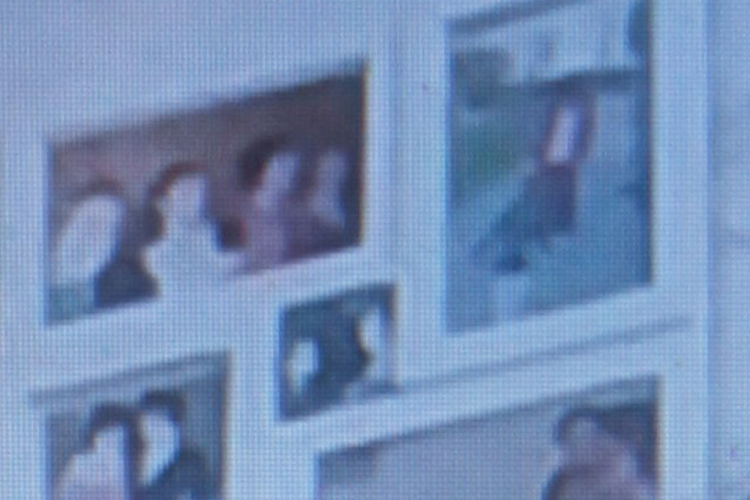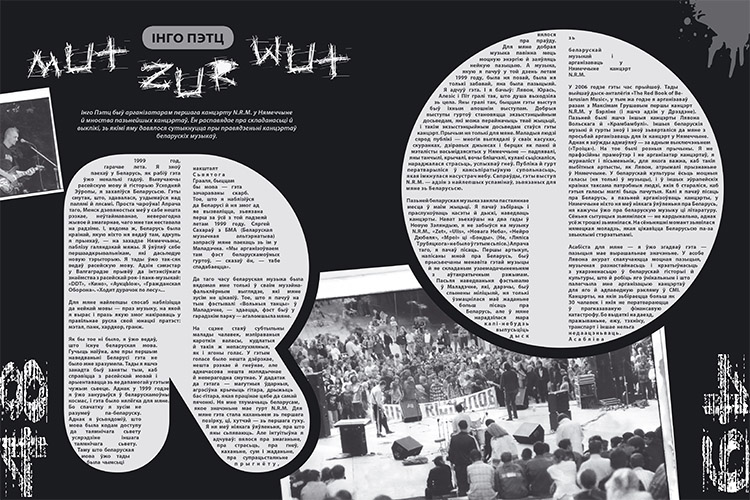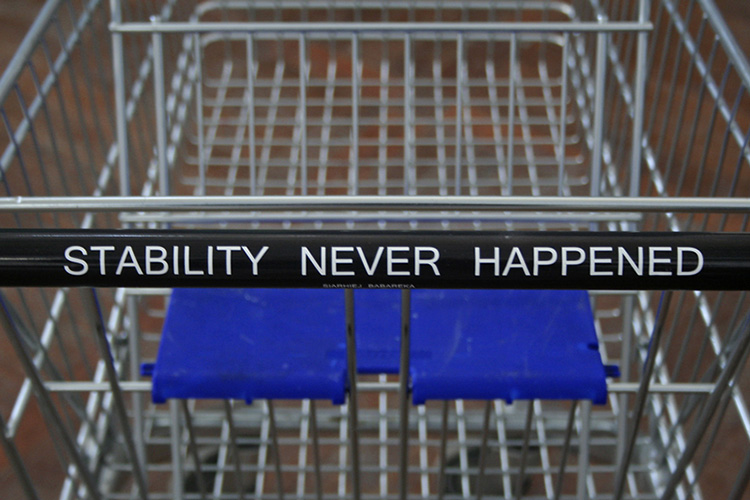
Аўтар: Artur Klinau, 18/06/2015 | ART discussion SPECIAL
WALKING AROUND AN IMAGINARY MUSEUM-DISNEYLAND
A utopian project of Minsk museums’ reformatting
pARTisan #27’2015
Is there in today’s Minsk a museum that can compete in the uniqueness of its exposition with the collections of world famous museums? We hardly need to expect a positive answer.
Among the European countries Belarus has suffered most in wars and plunder, thus we drastically lack not only the works of art created by world famous artists, but mere antiques. So, is the appearance of unique competitive collections possible in Belarus? It actually is, but not through an attempt to create another Louvre. No matter how much money and efforts we invest, it will not be the Louvre or the Hermitage, but at best a bad provincial copy of a large imperial museum. Another way is in looking for unique museum collections, which would have a universal format, but at the same time would be rooted in historical features of the country.
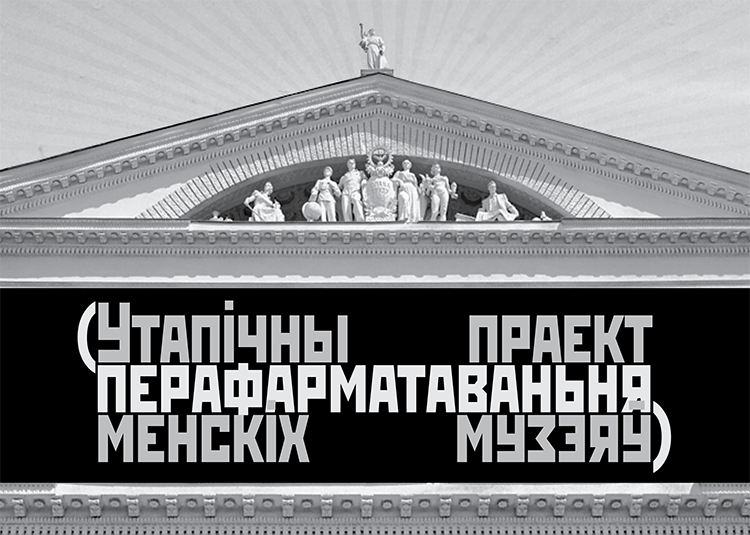
A Sun City of Dream, a unique urban ensemble of the communist epoch in Minsk, can be named as one of the most interesting objects in this country, which a long time ago must have been given the status of a museum — an architectural reserve under the open sky. This phenomenon is not «communist», but rather «capitalist», a promising business-project, which has all the chances to become a famous tourist brand in Europe on condition of the correct «promotion». Unfortunately, in recent years the opposite thing has been happening: we are losing this object because of the chaotic downtown development, the integrity of the ensemble is getting destroyed. However, despite the rise of the uncontrolled chaos, A Sun City of Dream still remains the most potentially interesting museum-like object, a reliable and unique city’s capital. And to be such we do not have to build giant plants, but only to do two basic things: to save the city and to create a museum-disneyland on its territory.
However, not another one, similar to those already existing in Europe, but the authentic, unique Disneyland. The city needs new museums and partial reformatting of those that already exist.
Let us mentally reformat Minsk museum map to make it match the tourist brand of A Sun City of Dream, and we probably should start with the main country’s museum.
Museum as a representation of power
We have inherited most contemporary Belarusian museums from the Soviet regime. Those few new institutions that arose during the time of independence rather became the continuation of the same Soviet discourse. If we put aside the ideological (communist, Marxist) components, the essence of the Soviet system of museums can be reduced to the colonial model. Among them there are several strong imperial museums (the Hermitage, the State Tretyakov Gallery, the State Historical Museum in Moscow), which in their turn were inherited by the USSR from the Russian Empire. A large number of their much less interesting clones in every big city of the Soviet Union, a network of ethnographic (local history) museums which again bear the colonial function, as their goal was to explore ethnic groups and cultures captured by the Empire, as well as a number of thematic museums that can be left out of question, because of their low social weight. In this system purely ideological museums (for example, Museum of the Revolution in Moscow) can be seen as a separate group, they were reformatted or disappeared with the change of ideology, and so-called museums of depressive memory, the expositions of which are linked to the Second World War events.
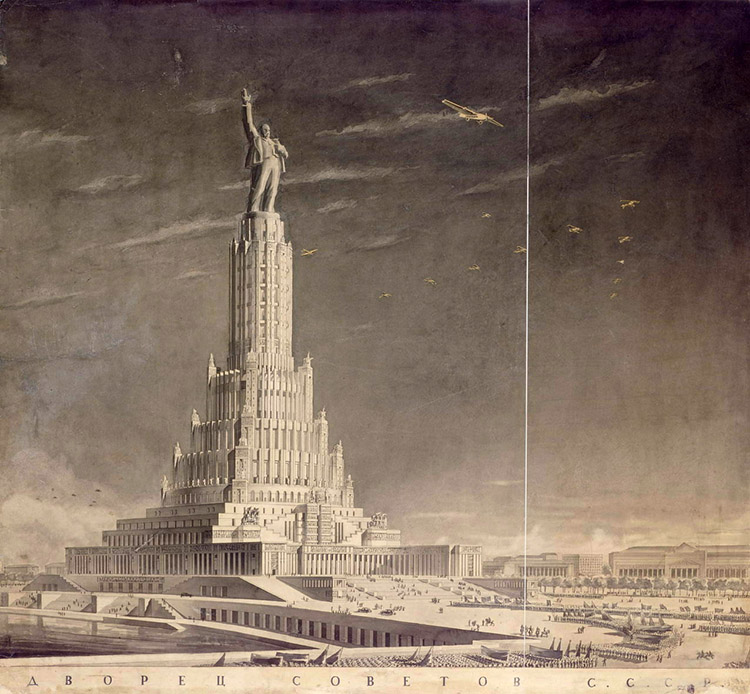
The Big Imperial Museum is the main embodiment of the idea about a museum in the mass consciousness of not only post-Soviet countries but also of the whole so-called «old world». Asking a random passerby in Minsk about an exemplary museum, you are likely to hear about the Louvre, the Prado, the Hermitage, the British Museum. These most famous collections in the world were created in the metropolis of great empires and were essentially formed as a cabinet of curiosities, which stored valuable artifacts looted in numerous colonies. Imperial museums did not only represent the power and majesty of the metropolis, but also were one of their essential attributes, a tangible evidence of territorial expansion. But the time of empires has passed. Societies have been reformatted.
However, the imperial museums remain an obsolete relic of those times, having turned themselves into one huge artifact of the colonial peoples’ past.
The question of imperial museums reformatting, which is not possible without restitution, with returning of the looted to the descendents of the formerly colonial peoples, for obvious reasons is not on the agenda and will hardly ever arise. Western societies have been reformatted, but apparently not enough to voluntarily return the treasures to their former owners. Rather, it is a headache of the former colonies themselves, however it is the problem without any chances of being solved even in the long run. But not the moral aspect of the existence of big imperial museums is important for us here, but the fact that today in Western societies the component of intellectual search has shifted towards museum institutions of another type. And there were those old imperial monsters to become the museum-disneyland for millions of tourists. Reformatting of the museum space of Europe happened not through the reform of these institutions and moving towards the forefront of the process of new museums. Democratic systems of power represent themselves as the museums of another kind.
However, is there any chance of such changes in Belarus?
Museum as a representation of power — 2
How does the unreformed map of the Belarusian museums look today? It fully duplicates the same colonial scheme. A big, but provincial clone of the Imperial museum with many multivector (as many as 17!) collections, where the role of the antiquity is performed by the Chinese art of the 19th century (the National Art Museum). The museum of local history and ethnography (the National History Museum), which is supposed to give an idea about the customs and the way of life of the local aborigines, nevertheless fails to fulfil this function. Beside the main exposition, scattered around the floors, some smaller museums able to satisfy any taste have been created: starting from «tiny green crocodiles» to «chocolate bears.» We also have a large museum of «depressive memory», restored in the new building, (the Belarusian State Museum of the Great Patriotic War), a few smaller ones, and a lot of mysterious departmental museums, hidden somewhere in the city outskirts. Perhaps the most mysterious of them is the Ancient Belarusian Culture Museum existing on the basis of the National Academy of Sciences, which, judging by the stories of few witnesses, hosts a fantastic collection of Belarusian art an ordinary person has no chances to watch.
If the main country’s museum is the representation of power, then what power today does the National Art Museum represent, with its eclectic exposition made up of a bizarre mix of Sarmatian portrait, porcelain figurines, socialist realism pieces of art, Shishkin’s landscape versions and Peredvizhniki (The Wanderers) artists’ sketches.
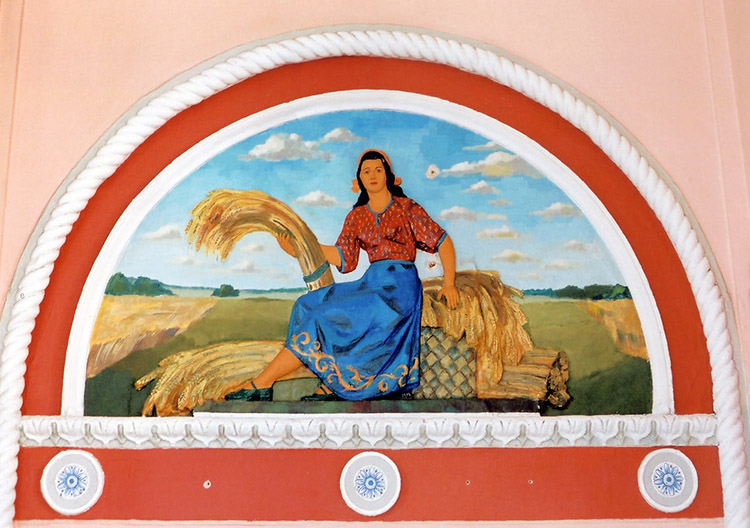
Artur Klinau. From the visual poem A SunCity of Dream
Speaking of power, we do not mean its personification, but ontological nature, that is the concept of power as a sovereign in an independent country. Each power requires legitimization. A proto-museum actually emerged not as a collection of beautiful banknotes, but namely as one of the means of power legitimization, a collection of material evidence of the sovereign’s rights to a particular territory. Each baron aspired to have such a proto-museum in the form of a family heirloom, as a gallery of ancestors’ portraits and other «holy relics». For a monarch the best legitimization was that granted to him by God. But even possessing «the God’s patent», he had to have a tangible proof of his family tree, if not dating back to the ancient Romans, but at least to the Vikings.
Today in most countries of the world the sovereigns are presented by the people, or at least it is claimed as such. The main state museum still remains the necessary attribute of an independent country’s sovereign, a tangible evidence of its legitimacy. It must not necessarily be a large and random collection of valuable antiques. A museum is a text, and in this case a sacred one, the materialization of the collective memory and a message addressed to the descendants. The essence of this message does not suppose claiming that we also have Russian artist Shyshkin. Its goal is to witness the legitimacy of the sovereign (people), to bring its rights to certain areas, through historical artifacts to materialize his family tree even not to the seventh, but to a much earlier generation. Without this material evidence the sovereign’s legitimacy (that of the people’s) will always remain questionable. Especially for our Eastern neighbour, for whom the Belarusians and the Ukrainians still remain «not enough of a people» with their territories seen as colonies.
This is where the concept of an urgent need in reformatting of the main country’s museum comes from. Everything that has nothing to do with the main text should be put out from it. All that contributes to sacralization and legitimization of the sovereign must be taken from the museum stores and be shown to create a clear readable message. Through the works of art a path should be tracing the route from the Vikings, Krivichies and Yatvingians to the early Middle Ages, through the Grand Duchy of Lithuania to Rzeczpospolita, through the XIX century to Chaim Soutine and Marc Chagall. Only really worthwhile artifacts of the Soviet era should be left in the main text body, whereas the things which do not fit can become a part of separate expositions (for example, a foreign art gallery).
If in this big «puzzle» some individual elements are missing today, efforts should be made to get them. Of course, Soutine’s or Chagall’s original works cost a lot. But it is a lot of money for an individual person, but not for the state.
The things that happen to be put out from the main text can present a great collection of works of art, which worth becoming a separate museum’s exhibition, probably within the National Museum, in order to avoid arguments when dividing property. Speaking about the Soviet legacy, at the moment it does not represent power (of the country’s sovereign) at all, and even seen as a material substratum of collective memory it can be such only for the ageing generation. Nevertheless, these works have an undisputable value, even not so much for us, but for the viewer from abroad. In Belarus, unfortunately, there are only few Chagall’s works, but we possess really unique collections of the Soviet art, the interest in which is steadily growing in the world. It would be foolish not to take advantage of this heritage and not to make a separate big exposition out of it, to create a new museum – that of Socialist Realism.
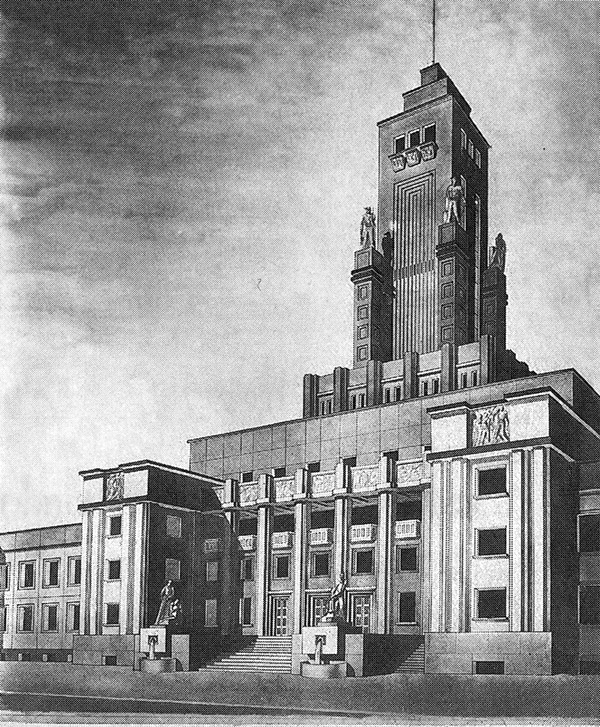
Such a museum would not have any claim to the sacred memory, but be part of a larger business project, one of the most important elements of tourist and museum-disneyland. This is exactly that new location of A Sun City of Dream lacks so much. However, to render a tourist brand of A Sun City of Dream effective, to make a person want to stay here not for a day, but longer, the city demands not two, but several unique museums. Let us try to take a walk across the first top-five museum of the imaginary Minsk Disneyland.
TOURISTIC MINSK TОP MUSEUMS
- The National Art Museum modified. The exposition covers a thousand-year history of the Belarusian art from pagan stones to this day. Its function is to represent the country’s sovereign, to materialize people’s collective memory. Putting out most of the works of the Soviet classics and Russian Faberge eggs would make the main concept more obvious. For the guests of the Belarusian capital it would be much more interesting to see Uładzimir Cesler and Siarhiej Vojčanka’s Project of the Century. Reinforced by the original Chagall’s paintings, the exposition of the museum would have nothing but success.
- The Museum of Socialist Realism and Sots Art. The exposition would be formed from the collections of the National Art Museum, the Memorial Museum-Studio of Z. Azgur, the M. Savitsky’s Art Gallery together with the works taken from other private and public collections (not necessarily Belarusian ones), monumental sculpture, architectural projects, posters and photographs of the Soviet epoch. Its function is to be a business project, the museum-disneyland which first of all targets foreign audience. It would be important to enrich the collection with the works of the world famous non-Belarusian Soviet classics (A. Deyneka, B. Ioganson, Nalbandyan, etc.). The final part of the exposition (for a counterpoint) can be presented by the works of Sots Art of the 1980-1990s (Komar and Melamid, I.Kabakov, D.Prigov, A.Kosolapov and others). Also, in addition to the permanent exposition an important role can be played by the museum exhibition halls with a program of large retrospective exhibitions of both classics of the Socialist Realism and Sots Art.
- The Utopia Museum, or the Museum of Communism. An interactive exhibition that would speak about five hundred years of the evolution of the communist idea from the times of its appearance in Europe (Tommaso Campanella, Thomas Moore) to the present day. A separate section would be devoted to the attempt to implement the communist project in the Soviet Union. An important part of it would be the Gulag and repressions in the Byelorussian SSR. The House of the 1sr Congress of the Russian Social Democratic Labour Party could also become a part of the museum. The Utopia Museum (Communism) would be an absolutely innovative institution not only in Belarus, but also in Europe. It would perform a number of functions: a place of collective memory (repressions, the GULAG) for the Belarusians, a business project, a museum-disneyland (an illustrated, interactive encyclopedia of the development of the communist idea) for foreign audience and a large platform for discussions on social theories. To put it into life, in addition to the permanent exposition the museum would have to have a special art center Utopia with exhibition halls for presentations of various social practices in contemporary European art.
- The Museum of the Belarusian Jews. A totally new institution, which has a crucial importance in terms of the renewal of collective memory about a significant role of the Jews in the history of Belarus, as well as about the role of our country in the fate of the European Jews. An interesting solution for the museum’s localization can be found in the restoration of one of the city’s historic districts together with a former synagogue. In addition to the memorial functions, such a museum would be an important place of foreign tourists attraction.
- The Museum of the City. If the central element of the tourist «disneyland » would be found in the architectural reserve of A Sun City of Dream or the actual city itself, it would be important to have an exposition that would explain what underlies its uniqueness.
- The Museum of the Second World War. According to its functions, it would be a so-called museum of depressive memory (War Museum, the Museum of the Holocaust) aimed at outlining taboo zones in the collective memory, at putting certain didactic markers. In fact, the goals of their expositions would be to talk about catastrophic consequences of violating the marked boundaries. However, in our time taboo zones are increasingly becoming a part of the popular culture and the museums of depressive memory are taking on a role in the entertainment industry which was initially not characteristic of them. To tell the truth, each nation has its own historical trauma. The Holocaust would never become a part of the museum-disneyland for the Jews. Just like the theme of the Second World War, and in general any war will always be a zone of depressive memory in the collective minds of the Belarusians. But this topic can become an important part of the museum-disneyland for foreign tourists. Whatever way we treat the installation Stalin’s Line, but we must admit, that today it enjoys a constant popularity among the guests of our country.
- The Historical Museum. The Historical Museum shares the function of the National Art Museum. It should legitimize the country’s sovereign, but not through art artifacts, but through a documentary narration. It is not an artistic, but a documentary text rather addressed to domestic, than to foreign consumers. However, within this museum a separate large section might appear, even better – a museum that has a chance to become an important item in Minsk tourism infrastructure. I mean the exposition dedicated to the theme of the First World War. As you know, the Eastern front line of that war was passing exactly across the territory of Belarus. The First World War for the Belarusians had no less disastrous consequences than the Second World War. Therefore, this topic deserves a separate detailed exposition. Moreover, it would perfectly fit the European context, too, so it is not only our internal issue, but would certainly be interesting to the viewer from Europe.
- The Museum of Chaim Soutine. From the financial point of view, it is the most complicated exposition, since it would require the acquisition of the artist’s original works. However, Chaim Soutine is one of the world’s most famous artists born in Belarus, second only to Marc Chagall. In addition to the moral aspect — the return of the artist’s works home – the expenses on purchasing the collections of Soutine’s works in the long term would certainly be covered by the profit obtained due to the increase of the attractiveness of Belarus to the tourists.
- The Museum of Wooden Architecture in Stročycy. Even now it is one of the most appealing Belarusian museums. In future we would like to see the expansion of its exposition. It may be done through the reconstruction of the site of a traditional Belarusian town which would include a wooden cathedral, a church and a synagogue, as well as an old noble manor. The exhibition in Stročycy has a chance to become a place that directly, without any quotes, can be called a Belarusian disneyland. To do this, an architectural exhibition should be supplemented by the reconstruction of rites, folk festivals, traditional crafts workshops, which together with the entertainment services (taverns, stables, festivals) would become a major center of attraction not only for tourists but also for Minsk residents.
A short version of the translation from the Belarusian language.
Artur Klinau
Opinions of authors do not always reflect the views of pARTisan. If you note any errors, please contact us right away.



